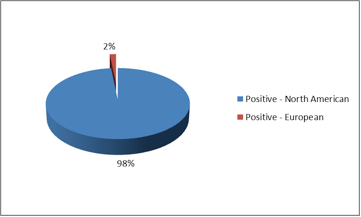September 3, 2013

Porcine reproductive and respiratory syndrome (PRRS) virus remains a very important disease of swine in the United States. At the University of Minnesota Veterinary Diagnostic Laboratory, hundreds of samples are routinely tested for this virus by polymerase chain reaction (PCR) every month. This test can differentiate between the two main types of PRRS virus: the European type and the North American type. Both types have been described in the United States.
However, the vast majority of PRRS virus cases are of the North American type (See Figure 1)

But just knowing that a PRRS virus is of the North American type does not tell us the whole story, because there is a large amount of variability within the North American type of virus.
In an attempt to make sense of this tremendous genetic variation, scientists have tried to classify the PRRS virus genetic variants into a few subtypes or “Lineages.”
In order to find out more details about the type of virus that we are dealing with, we need to sequence the RNA of the virus.
At the University of Minnesota Veterinary Diagnostic Laboratory, approximately 150 PRRS viruses are sequenced every month. From these sequences we have learned that the majority of the PRRS viruses in the United States are of the Lineage 1.
But having this knowledge can get even more complicated because within the lineage 1 PRRS virus, we can distinguish multiple groups, sometimes identified with enzyme cut patterns such as 1-8-4, 1-18-2 or 1-4-4.
Like what you’re reading? Subscribe to the National Hog Farmer Weekly Preview newsletter and get the latest news delivered right to your inbox every week!
PRRS virus sequencing also allows us to look at the variations of PRRS virus types over time. For example, in 2001, we observed the emergence of a new dominant group of viruses characterized by a 1-8-4 pattern. Then later in 2008 we observed the emergence of the 1-18-2 viruses.
In contrast, even though PRRS virus remains extremely variable, we have not observed the emergence of a new dominant PRRS virus strain in the last years.
Therefore, despite the fact that PRRS virus is constantly changing and evolving, the main types of virus that affect U.S. swine today are similar to the viruses we had 2-3 years ago.
You might also like:
Extreme Heat, Scarce Rainfall Could be Hard on Crops and Production Costs
Pondering the Zilmax Controversy, Pork Demand and Feed Cost Expectations
You May Also Like



